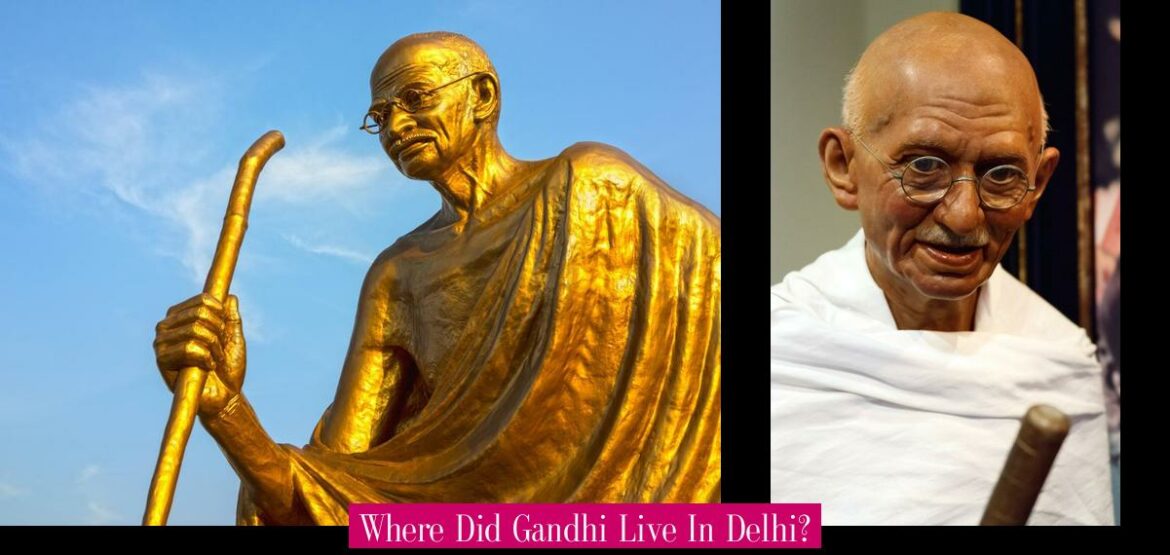Where Did Gandhi Live in Delhi? Unraveling the Enigma of the Mahatma’s Delhi Abode
Alright, folks, let’s talk about the Mahatma – the man, the myth, the legend, Mahatma Gandhi! We’re not discussing his legendary deeds or his unwavering dedication to non-violence. No, no, today we’re getting down to the nitty-gritty – where did this iconic figure actually live in Delhi?
Let’s be honest, the man travelled more than a Bollywood star on a promotional tour! But today, we’re focusing on the capital city. So, buckle up buttercup, because we’re going on a journey through time, tracing the steps of the Mahatma himself, with a touch of humor and a sprinkle of sarcasm, of course.
The Birla House Saga: A Tale of Tragedy and Transformation
Now, let’s start with the most significant address in the context of Gandhi and Delhi – Gandhi Smriti, formerly known as Birla House. This place holds a bittersweet significance. It’s the very spot where Gandhiji spent the last 144 days of his life, a period filled with a mix of hope and despair. But sadly, it’s also where he was tragically assassinated on January 30, 1948, by a fanatic named Nathuram Godse.
Picture this: The Birla House, a grand abode on Tees January Marg (formerly Albuquerque Road), where Gandhiji, the man who preached simplicity and peaceful resistance, resided. It’s a stark contrast, isn’t it? But then again, life is full of such ironies.
A Peek into the Mahatma’s Life: Gandhi Smriti Today
Today, the Birla House is a national monument, renamed Gandhi Smriti, a solemn place where people from across the globe gather to pay their respects to the Mahatma. It’s a poignant reminder of the legacy he left behind. You can walk the same hallways, stand in the very room where he spent his last days, and witness the simplicity of his life.
The Maharishi Valmiki Mandir: A Temporary Abode
But before Birla House became his final residence, Gandhiji spent a considerable chunk of time at another location – the Maharishi Valmiki Mandir on Mandir Marg. Now, this one’s a bit of a surprise, isn’t it?
You see, Gandhiji, the man who championed the cause of the downtrodden, the poor, and the marginalized, spent 214 days at a temple dedicated to Maharishi Valmiki, a sage who, according to Hindu mythology, is considered the author of the epic Ramayana. Talk about a fascinating intersection of history and faith!
Raj Ghat: The Eternal Resting Place
While Gandhiji’s residences in Delhi tell us about his life, it’s his final resting place that truly defines his legacy. We’re talking about Raj Ghat, situated on the banks of the holy Yamuna River.
Imagine this: The ashes of the man who preached peace and unity, scattered on the banks of a sacred river. It’s a humbling experience. Raj Ghat is a simple, yet powerful monument, a testament to the man’s unwavering beliefs. It’s a place where people from all walks of life come to pay homage to the Mahatma, to remember his teachings, and to seek inspiration from his life.
Beyond the Addresses: A Deeper Look into Gandhi’s Delhi
But even beyond these specific locations, Gandhiji’s presence in Delhi was everywhere. He marched on the streets, addressed massive crowds, and engaged in dialogues with leaders, all with the aim of achieving independence for India.
The city of Delhi, with its rich history and cultural tapestry, became the stage for Gandhiji’s struggle for freedom. He used its bustling streets and public spaces to spread his message of non-violent resistance, inspiring millions along the way.
Delhi: A City Shaped by Gandhi’s Legacy
Today, Gandhi’s legacy reverberates in every corner of Delhi. From the numerous memorials and museums to the ubiquitous street names and institutions, his influence is undeniable. Delhi, in its own way, became a microcosm of his struggle, a place where he fought for a better future, and a place where his spirit continues to live on.
So, to answer your question – where did Gandhi live in Delhi? Well, the answer is not a single address, but a tapestry of locations that reflect the multifaceted life of the Mahatma. He lived in Birla House, where his life ended, he stayed at the Maharishi Valmiki Mandir, and his final resting place is at Raj Ghat. But more importantly, he lived in the hearts and minds of the people of Delhi, who continue to be inspired by his legacy.
Remember, Gandhiji’s journey wasn’t just about the places he resided in, but about the impact he made on the world. His presence in Delhi, though transient, had a profound and lasting effect, shaping the city’s identity and leaving an indelible mark on the hearts of its people. So, next time you’re in Delhi, don’t just visit the iconic monuments, but take a moment to reflect on the man who made them possible, the man who lived, fought, and ultimately, left a legacy that continues to inspire generations.
In the words of Gandhiji himself, « Be the change you want to see in the world. » Now, go forth and be the change! And remember, if you find yourself in Delhi, be sure to pay a visit to these sites, and absorb the spirit of the Mahatma. You never know, you might just find yourself inspired to make a difference in your own way, just like he did.

